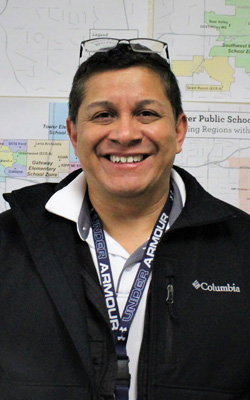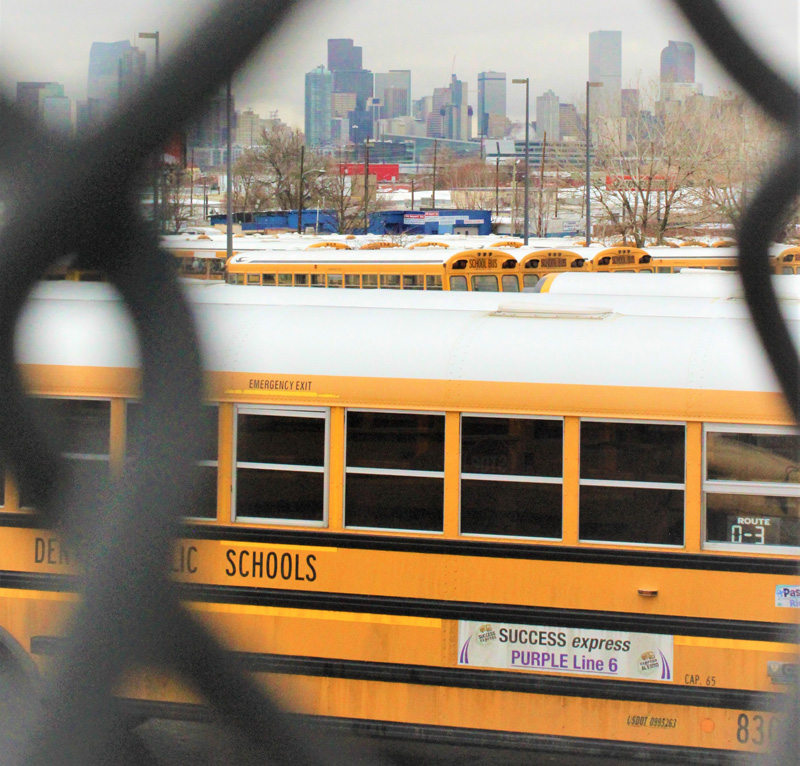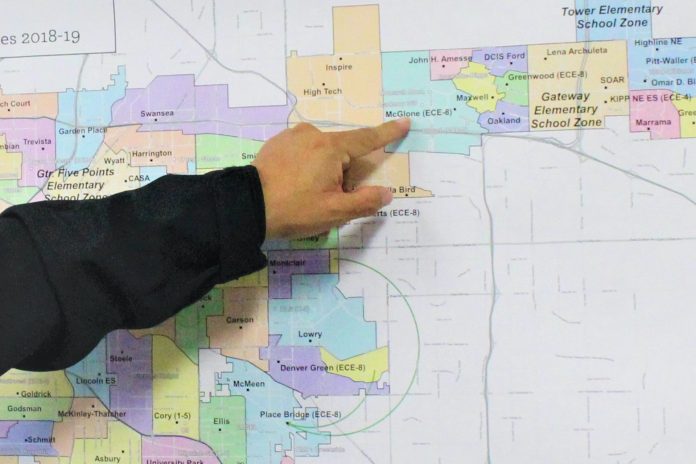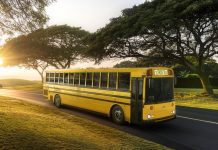Twenty years ago, the yellow school bus was a symbol of access. Today, some stakeholders see it as a barrier that is keeping students away from schools of their choice.

The challenges of designing equitable routes to schools are ever more apparent in Denver, Colorado, a burgeoning American metropolis where public schools are statistically more segregated today than they were in the 1960s.
Policy-wise, Denver Public Schools says it values equitable access to education. Last December, the Board of Education hired Susana Cordova as superintendent. She swore to make equity a top priority. This past month, voters elected several new members to the school board who campaigned on reinforcing this vision.
The question for Albert Samora, Denver’s new executive director of transportation, is how?
In 1973, after finding a de facto system of segregation, the U.S. Supreme Court ordered Denver to desegregate the Park Hill neighborhood and other inner-city schools. Since the Court lifted its sanctions in 1995, school choice has become the main way students from different neighborhoods mix.
Given the choice, many communities choose not to desegregate, while others are limited by transportation options. As the adage goes, school choice without transportation is no choice at all.
Related: Busing for School Integration Lacks Support
“We’re starting to deal with smaller populations, not less important, just smaller populations,” Samora said. “Choice is complex because we still have boundaries. I can’t just take a student from the northeast and bring them to the far corner of the southwest and expect that student to succeed, because they just spent an hour and 15 minutes on the bus.”
More than half of Denver’s schools are attended by populations that are 90 percent racially homogenous. By the Denver Post’s count, about 55 percent of Denver students would have to be moved to different schools in order to achieve diverse racial demographics across the district.
Samora has Apache roots himself and sees the complexities of diversity. Hitting a racial quota won’t solve gentrification, he said. Within the city’s black, white and Hispanic populations live different generations and cultures that were brought to different parts of Denver by different forces.
“Whether it’s okay the way it is, it’s up to the people in those communities who want the opportunity to get out of their neighborhoods. Building a transportation system around that requires us to think differently,” Samora said.
His goal is to find the most efficient way to route the most accessible for those who choose non-traditional schools.
“There are two thought processes in my mind when I think about the world: Either the system is efficient, or we are as efficient as we can be within the system. Transportation is currently as efficient as it can be in an inefficient system,” Samora observed.
“Transportation is currently as efficient as it can be in an inefficient system.”
Trying to keep bus ride times below 45 minutes limits student options in a city that is 155-square miles across. Denver transports 20,000 students each day, a little more than 20 percent of the 92,331 students who attend the public school system.
But Denver has seen success in providing options within its nine enrollment zones. Take the aptly named Success Express, a shuttle system that moves between five middle schools in Park Hill, one of Denver’s oldest neighborhoods. Started by Samora’s predecessor, Nicole Portee, the service allows students to merely access their nearest middle school and the shuttle will bring them to their school of choice.
Editor’s note: Portee left Denver Public Schools over the summer to accept a newly created senior executive director position that oversees operations systems support services for Guilford County Schools in North Carolina.
Since being implemented, the Success Express has reduced the transportation budget by over $1.5 million.
Denver Public Schools is also leveraging the city transit system by providing bus fare for high school students who want to leave their enrollment zones.
Autonomous bell times, of course, add complications. Denver Public Schools has expanded the traditional three-tiered bell system into 22 different tiers.
“Where can we use traditional busing? Because it’s very efficient, it saves us money. And where can we use shuttles?” Samora said he asks when reviewing routes. “And if we can’t use either of those two, what else can we do?”
Related: Denver Transportation Head Redefining Success Through Innovative Bus Service
Samora hasn’t even been on the job a full year. Denver Public Schools hired him as executive director of transportation in August. Like other districts, he’s still short 55 CDL drivers and 12 non-CDL drivers. When Denver’s Front Range that borders the Rocky Mountains was hit with snow in mid-October, he said 40 drivers called out.
But Samora’s background is in fixing things—he rose through the ranks as a mechanic. After running his own private shops, Samora applied for a mechanic job in Westminster Public Schools in 2003. He was 35 and said he figured he would fix buses until he retired, but the school district needed drivers and assigned him a route.
He was hired as shop foreman for Adams County School District in 2004, and worked in Boulder Valley School District for eight years, first as fleet manager, then as director of transportation.
Looking back on his coverall days, Samora said, “I liked being able to troubleshoot a problem, order the part, and fix it in one day.”
And yet, he’s anything but nostalgic.
“Some of my peers, they say 10 years ago we did it this way and it worked just fine—that’s because our customer was perfectly happy all those years ago with just riding, and our customer is no longer happy with that,” Samora said. “As our problems get more complex, our solutions get more complex. We can’t hold onto the past. We truly have to find an innovative solution.”
Related: STN Names Portee 2018 Transportation Director of the Year



















